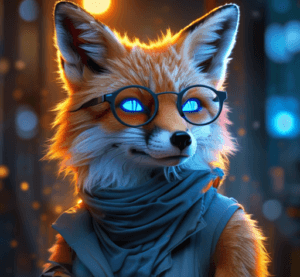How Crypto is Revolutionizing Digital Art and Creative Industries: Mastering Blockchain Innovations for Smarter Financial Futures
Can blockchain’s decentralized revolution transform the $1 trillion art market forever? To unlock this potential, mastering **blockchain basics** is crucial for navigating the crypto innovations transforming digital art and creative industries. In this article, we’ll delve into the fundamentals of blockchain technology, exploring its applications in the art world and how it’s poised to disrupt traditional markets with smarter financial futures.
The Rise of Digital Art
The art market has witnessed a significant shift towards digital art in recent years, driven by the increasing popularity of cryptocurrencies and blockchain technology. The global art market is valued at over $1 trillion, with digital art accounting for a substantial portion of this figure. However, traditional art markets are often plagued by issues such as authentication, ownership, and provenance. This is where **blockchain basics** come into play.
Understanding Blockchain Technology
Blockchain technology is a decentralized, distributed ledger system that enables secure, transparent, and tamper-proof transactions. It’s the foundation upon which cryptocurrencies like Bitcoin and Ethereum operate. A blockchain is composed of a series of blocks, each containing a unique code or “hash” that connects it to the previous block, creating an unbroken chain of data.
Imagine a digital ledger book where every transaction is recorded in a chronological order, making it impossible to alter or manipulate the information once it’s been written. This is essentially what **blockchain basics** provide – a secure and transparent way to conduct transactions.
Crypto Art Market Trends
The crypto art market has witnessed significant growth in recent years, with several platforms emerging to facilitate the buying, selling, and trading of digital art. These platforms utilize blockchain technology to create unique and verifiable ownership records for each artwork. Some notable trends in the crypto art market include:
- Cryptocurrency-based art auctions, where artists sell their work using cryptocurrencies like Bitcoin or Ethereum.
- Decentralized marketplaces, which enable artists to sell and buy digital art without intermediaries.
- NFTs (Non-Fungible Tokens)**, unique digital assets that represent ownership of a specific artwork.
The Future of Digital Art: Trends and Predictions
As the crypto art market continues to grow, several trends are expected to shape its future:
Increased Adoption of Blockchain Technology
The adoption of blockchain technology in the art world is increasing rapidly. More artists, galleries, and collectors are leveraging **blockchain basics** to create unique ownership records for their digital art.
Advantages of Using Blockchain Technology in Digital Art
Some key advantages include:
- Immutable ownership records**: Ensuring the authenticity and provenance of each artwork.
- Secure transactions**: Protecting artists, buyers, and sellers from potential scams or tampering.
- Increased transparency**: Enabling a clear view of art market transactions and sales data.
The Role of NFTs in Digital Art
NFTs are expected to play a significant role in the future of digital art. These unique digital assets enable artists to create and sell one-of-a-kind artworks, while also providing a secure way to prove ownership.
NFTs can be used in various ways:
- Art ownership**: Representing unique ownership records for each artwork.
- Collectibility**: Enabling collectors to buy and trade rare digital art pieces.
- Artist monetization**: Providing a new revenue stream for artists through sales and royalties.
Table: Comparison of Traditional Art Market vs. Crypto Art Market
| Characteristics | Traditional Art Market | Crypto Art Market |
|---|---|---|
| Ownership Records | Insecure and difficult to verify | Immutable and secure using blockchain technology |
| Transaction Security | Potentially vulnerable to scams and tampering | Secure through the use of cryptocurrencies and smart contracts |
| Transparency | Limited visibility into sales data and transactions | Transparent through blockchain technology and NFTs |
Blockchain Innovations for Smarter Financial Futures
As the crypto art market continues to evolve, it’s clear that **blockchain basics** will play a crucial role in shaping its future. By understanding and leveraging blockchain technology, artists, collectors, and galleries can create a more secure, transparent, and efficient art market.
Conclusion
The intersection of blockchain technology and digital art is an exciting space to watch. As the crypto art market continues to grow, it’s essential to understand **blockchain basics** and their applications in this field.
Additional Sources of Information
For more information on blockchain technology and its applications in the art world, consider exploring these resources:
- The Blockchain Art Association**: A non-profit organization dedicated to promoting blockchain technology in the art world.
- “Blockchain for Artists” by Artnet News**: An article discussing the benefits of blockchain technology for artists and collectors.
- “The Future of Digital Art: Trends and Predictions” by Medium**: A thought-provoking article exploring the future of digital art and its potential applications in the crypto space.
Explore more in our category page or visit our homepage.




